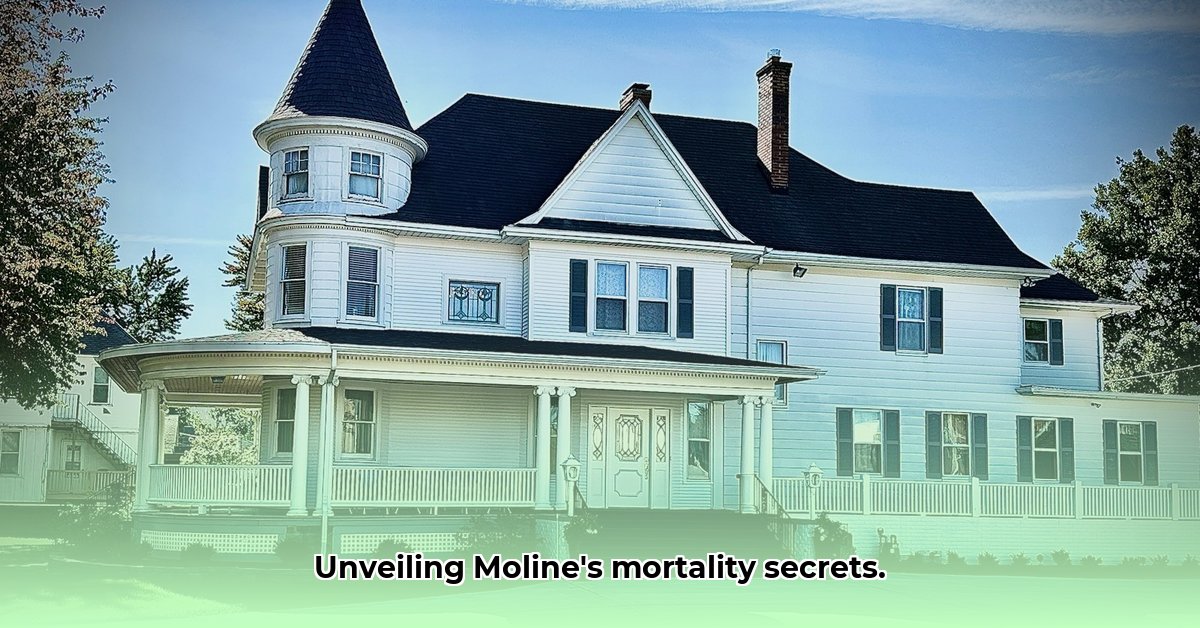
Understanding Mortality Patterns in Moline, IL: A Preliminary Analysis
This report analyzes mortality data from DeRoo Funeral Home in Moline, Illinois, between December 2024 and February 2025. The analysis aims to identify potential trends and highlight the need for more comprehensive data collection. It is crucial to acknowledge that this analysis is based on a limited dataset, restricting the scope of conclusions. Any observed patterns should be viewed as preliminary and require further investigation using broader data sources.
Age Distribution of Deceased Individuals
The available data reveals a range of ages among those who passed away, spanning from younger adults to individuals in their nineties. A higher concentration of deaths was observed within the 70-80 age range. However, the small sample size prevents definitive conclusions about whether this represents a typical age distribution in Moline or reflects a specific characteristic of the population served by DeRoo Funeral Home. Does this concentration reflect broader trends in Moline's aging population, or is it a localized phenomenon? Further research with larger datasets is needed to answer this question.
Location of Death: Home versus Hospital
Death notices indicate that a significant portion of deaths occurred either at MercyOne Genesis Medical Center or in private residences. This suggests a diversity in end-of-life care settings, with some individuals receiving hospital care while others passed away at home. This variation may be influenced by factors such as access to healthcare services, personal preferences, or the nature of the underlying health conditions. To draw more meaningful conclusions, additional information is needed concerning the type of care received (home healthcare, hospice, etc.) and the specific circumstances for an individual. What roles did home healthcare or hospice care (or the lack of it) play in this observation? This requires a broader analysis.
Limitations of the Current Data
A major limitation of this study is the absence of data on causes of death. Without this crucial information, it is impossible to identify underlying health issues or prevalent disease patterns within the population. This lack of detail severely hinders any attempt at meaningful public health analysis. The limited dataset from a single funeral home only provides a narrow perspective on mortality patterns within Moline.
Actionable Insights and Next Steps
Despite the data limitations, this preliminary analysis highlights the need for improved data collection and collaboration to enhance our understanding of mortality trends in Moline. Here are several key actions:
Enhanced Data Collection by DeRoo Funeral Home: Incorporating cause of death information into future records would significantly improve the value of future analyses. This would provide a clearer picture of local health trends and aid in service planning.
Collaboration with Public Health Officials: A larger investigation, combining data from multiple funeral homes, hospitals, and potentially doctor's offices across Moline, is needed to draw broader conclusions on death trends. Comparison with regional and national data can further illuminate the significance of any observed trends.
Assessment of Healthcare Access and End-of-Life Care: The observed variation in locations of death warrants an examination of access to healthcare services and the availability of end-of-life care options within the Moline community. This analysis could inform strategies to improve access and support for all community members.
Summary of Findings and Future Directions
This analysis underscores the critical need for improved and comprehensive data collection surrounding mortality in Moline. The limited dataset from DeRoo Funeral Home offers only a fragmented perspective. The collection of data from diverse sources across the community would provide a more complete and accurate picture, leading to an improved understanding of health needs, and ultimately, the development of more effective community health initiatives. The focus should be on collaboration and a unified effort to achieve this urgently-needed data collection.